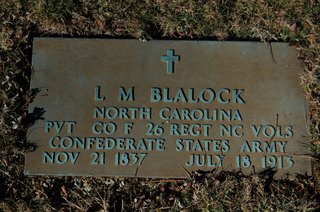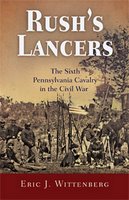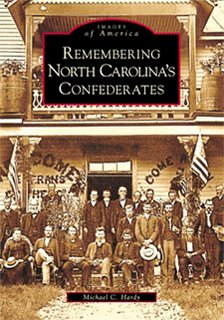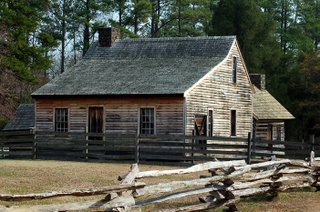
It amazes me sometimes the way we can distort history. Today, I went up to the Montezuma Community Cemetery here in Avery County, to take a picture of the grave of William M. "Keith" Blalock for a local history project that I am trying to wrap up. I am sure I have pictures of his gravestone here someplace, but it was easier to go by the cemetery when I took off my trash. Blalock’s stone reads "L. M. Blalock.... PVT Co. F 26 REG. NC VOLS CONFEDERATE STATES ARMY" I have no idea who put up the marker.
First, his name was not "L. M." but William McKeeson. It is true that he served as a private in Company F, 26th North Carolina Troops. And, he was honorably discharged, after having rolled around naked in every type of poisonous plant that he could find. After Blalock returned back to the mountains of western North Carolina, he started guiding escaped prisoners from Salisbury and other dissidents over the mountains and into east Tennessee where they met with Dan Ellis who continued the trip to Kentucky. He also used the war as an excuse to exact revenge on family members and other local citizens. Finally, he did join the Union Army near the end of the war (10th Michigan Cavalry). One thing is for certain, he had total disdain for the Confederacy. Yet at some point, someone chose to put a military marker on his grave, commemorating his two or three months in Confederate service.
His wife, Malinda, is interred beside him. She also served as a private, under the name of Sam, in Company F, 26th North Carolina. I wonder why no one chose to honor her service? She served just as long as Keith did.



